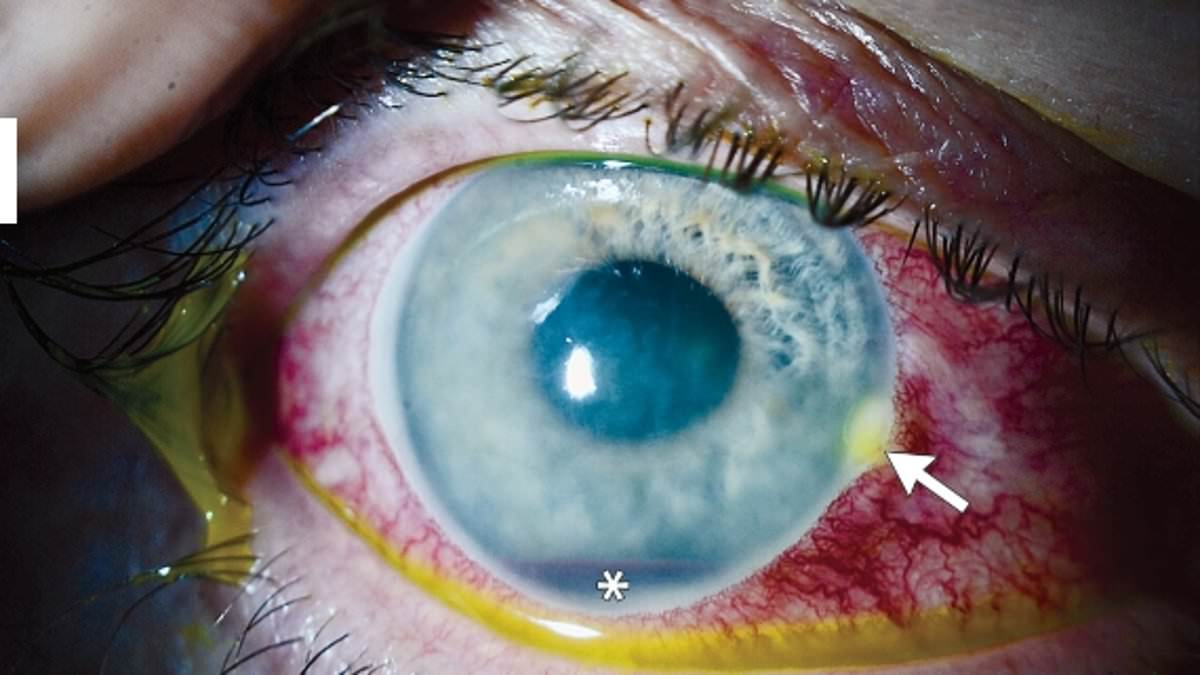A 55 year-old Philadelphia man was nearly blinded after a bee stinger got lodged in his eyeball and had to be forcibly removed with tweezers.
The man presented to urgent care with ‘worsening vision and pain’ and the stinger was quickly identified — but doctors failed to remove it all, as it was embedded in the edge of his iris, or the colored bit of the eye.
Two days later, the man entered the Wills Eye Hospital in Philadelphia, still in pain and virtually blind in his right eye.
Further tests revealed that the man was suffering dangerous bleeding inside the eye and damage to the tiny blood vessels.

The side of the eye closest to the nose still had part of the stinger lodged in it, which appeared yellow after the eyes were dyed, as shown by an arrow in the image

The doctor removed the remaining portion of the stinger using jeweler’s forceps, but his eye was still inflamed, and he needed follow-up care at an ophthalmologist
Doctors discovered the damage using a detailed eye exam using a slit-lamp and fluorescein dye, highlighting any damage by turning it yellow-green.
He had redness in the white part of the eye, known as conjunctival injection.
He also had severe swelling in the lower part of the cornea, the clear, dome-shaped front part of the eye that covers the iris, pupil, and anterior chamber.

Stingers are tiny, but doctors snapped a picture at 100 times magnification
The side of the eye closest to the nose still had part of the stinger lodged in it, which appeared yellow after the eyes were dyed, as shown by an arrow in the image.
Additionally, there was bleeding inside the eye, likely caused by damage to the iris from the stinger and bleeding from the iris vessels, shown by an asterisk in the image.
Stingers are tiny, but doctors snapped a picture at 100 times magnification.
They range in size from 1.5 to 3 mm, about one-sixteenth to one-eighth of an inch.
Doctors prescribed the man antibiotic eye drops and drops containing prednisolone, a corticosteroid used to treat inflammation.
They said: ‘At 5 months of follow-up, the visual acuity in the right eye had improved to 20/25.’
Bee stings in the eye are rare, and few case studies describe it.
Stingers are barbed so that they can saw through tissue and lodge themselves in the eye.
Typically, when the stinger is removed from the bee’s body as it becomes embedded in a person’s skin, or in this case, his eye, most of the bee’s guts are pulled out, and it dies.
Bee, wasp, and yellow jacket stings contain venom.
Venom can cause significant damage to the cornea, iris, and retina, potentially leading to blindness.
That damage can also lead to scarring, another potential cause of vision loss.
